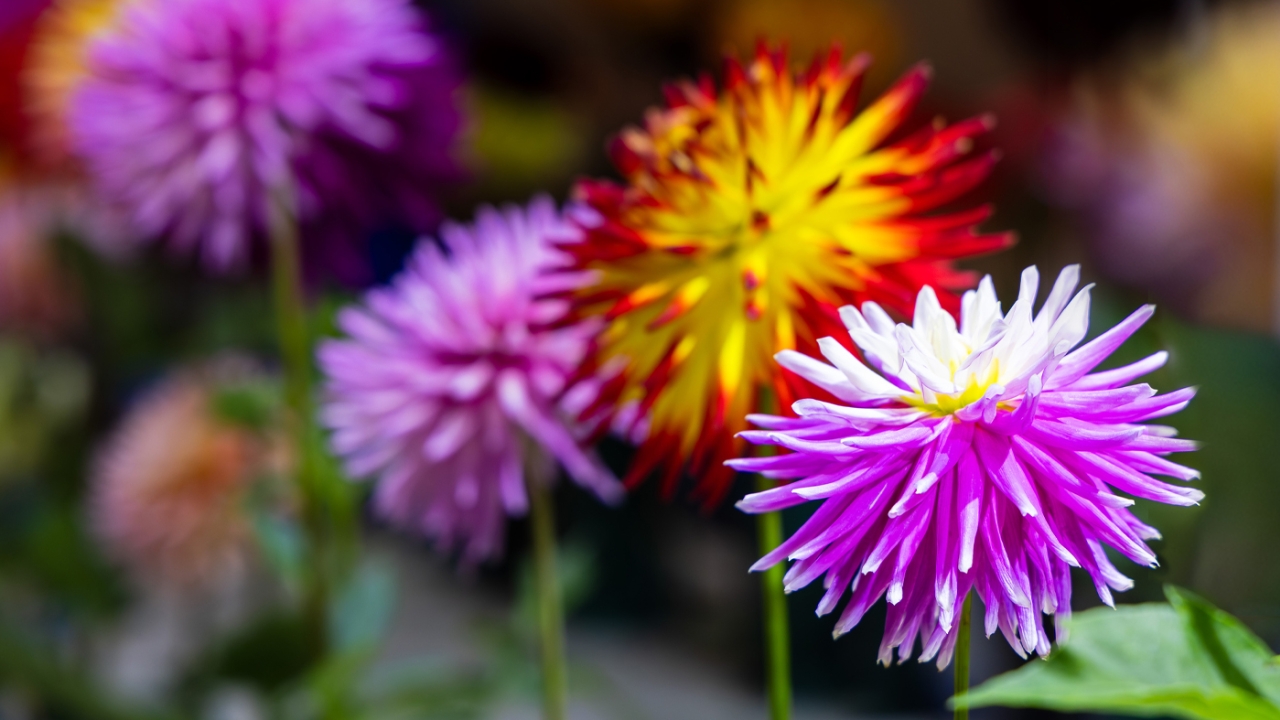

Smart Gardener
Peppers
Capsicum spp.
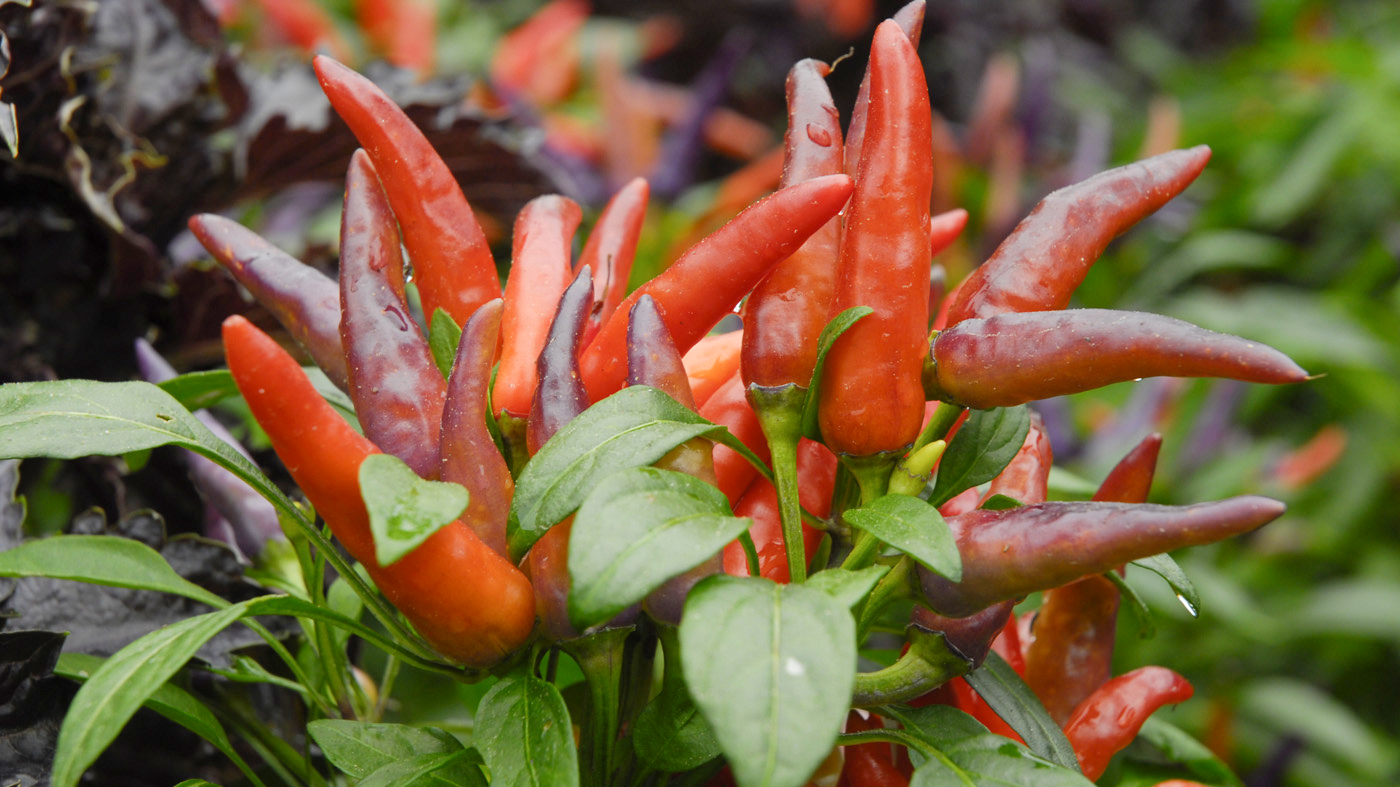
Sangria hot pepper (Capsicum annuum var. annuum 'Sangria') sports a riot of color in August.
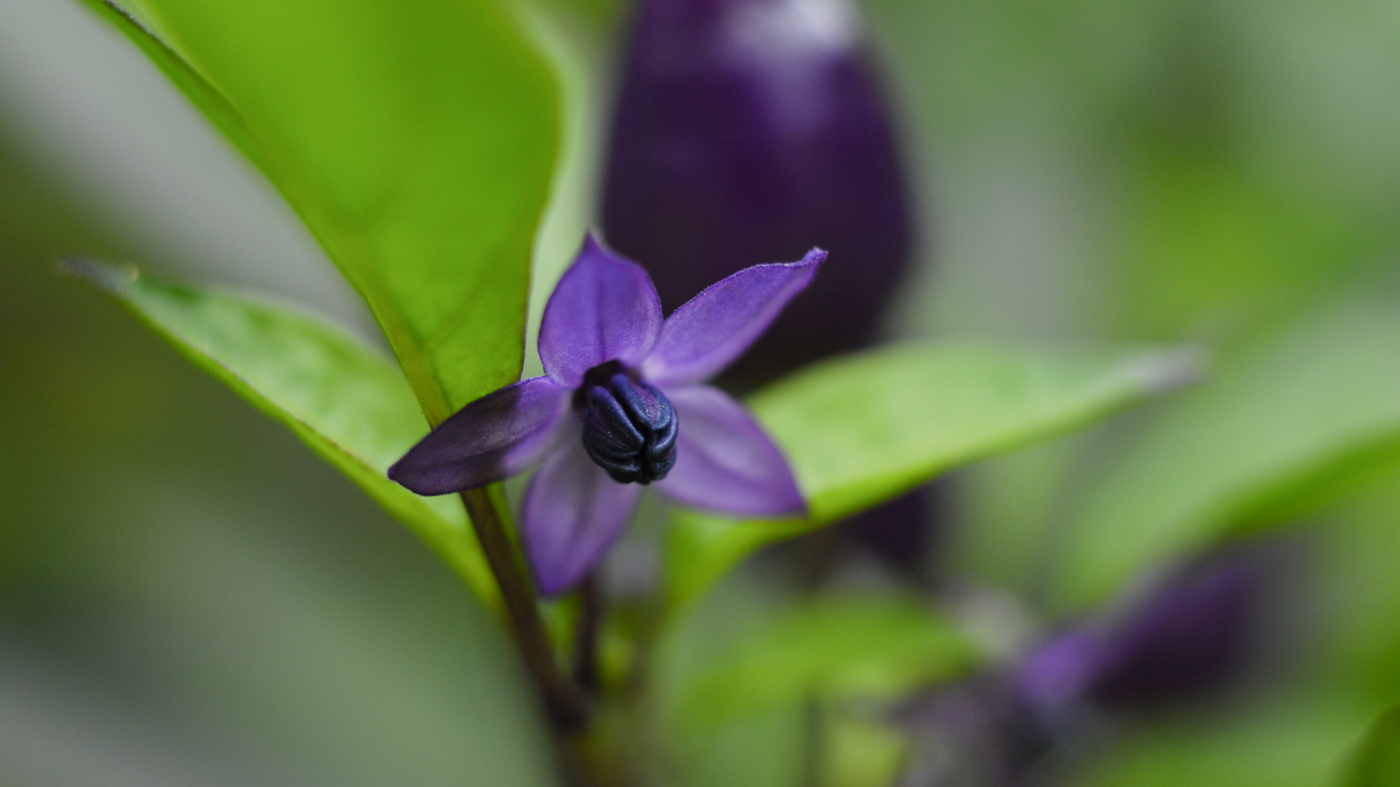
Arnold Promise witch hazel (Hamamelis x intermedia 'Arnold Promise') sports a riot of color in August.
Peppers add color and heat to a world of cuisines
They vary from the paprikas of Hungary to the curry powder of India to the bird's-eye pepper of Thailand and the many nuanced chile flavors of Mexico. Peppers had long been cultivated in tropical areas of South America and Mexico by the time Columbus arrived, but they quickly spread throughout the world, and a few species have given rise to varieties with a wide range of sizes, shapes, and heats.
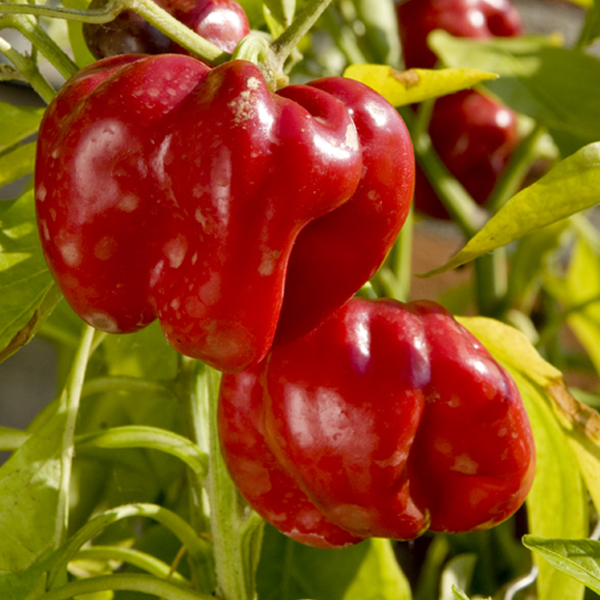
Like all pepper varieties, red bell peppers (Capsicum annuum)are heat-loving plants
Varying heat
Many peppers, including bell or sweet peppers and jalapenos, are eaten when still green. If left on the plant longer, they all will ripen, usually to become red with more heat. That heat comes from an irritating compound called capsaicin. The body often reacts to capsaicin by sweating, which some suggest is one reason hot peppers are popular in hot climates.
In northern climates, peppers tend to be bred for mildness and eaten green—perhaps partly because the growing season is too short and cool to get them really ripe. Recently, though, a vogue for hot peppers has led breeders to introduce varieties that ripen in a shorter season.
Varying shapes
Peppers (which come from several species in the genus Capsicum) can be confusing because they vary so much in shape as well as heat. Large bell-shaped peppers are nearly always mild, but the small, oval, orange Scotch bonnet is hot enough to sear your soul. Long peppers range greatly, from the mildly pungent banana pepper to the screaming-hot Thai bird's-eye pepper. So it's important to read catalog descriptions and labels carefully. A variety of peppers can be found in the Garden's Regenstein Fruit & Vegetable Garden.
Appealing qualities
Their bushy habit, large green leaves, and colorful fruit make pepper plants attractive. Breeders have developed varieties specifically for their ornamental qualities, with small, glossy fruits of bright red or purple. The peppers are edible and can be hot, so it may not be wise to grow these plants where children play.
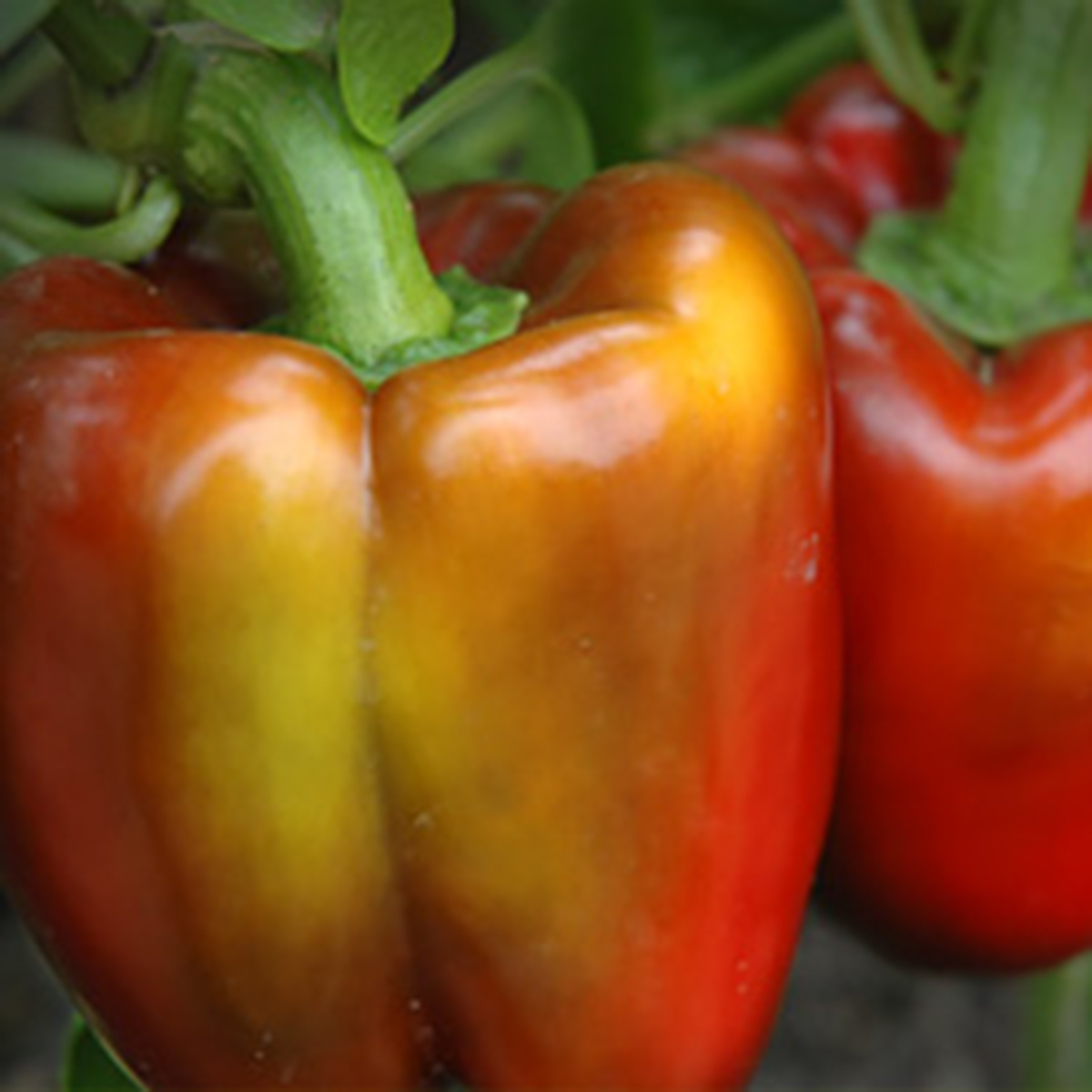
Save seeds from heirloom peppers like King of the North (Capsicum annuum 'King of the North') to plant next year — but in a new location.
Growing tips
The key to growing peppers is a long, hot summer—the kind of summer that is pretty much guaranteed in Bolivia, but not in Chicago. You'll need a site in full sun and well-drained, fertile soil, amended with plenty of compost or other organic matter.
It's essential to start with transplants, either grown yourself indoors under lights for two to three months or purchased from a catalog, garden center, or plant sale. Peppers are very tender and dislike cool soil even more than their cousins the tomatoes. So don't plant them in the garden before June, when the soil has reached at least 60 degrees Fahrenheit. Temperatures should be in the 70s during the day and no colder than 50 at night.
June planting doesn't leave much summertime for the peppers to set and ripen. So when you shop for peppers, pay attention to the "days to maturity" in the label or catalog description. Often there will be two numbers, one for picking the crop at the crisp, milder green stage and another, a couple of weeks longer, for ripening to the more tender, flavorful (and often hotter) red stage. Your best bet in the Chicago area is a pepper variety that will ripen from transplanting to the stage you choose in no more than 70 days.
Starting your own plants
If you start your own plants, you will need to provide quite high temperatures (about 80 to 85 degrees) for a couple of weeks for the seeds to germinate. An electric seed-starting mat or a spot above (not directly on) a radiator will do it.
Time your planting so that you can grow the seedlings under lights for 10 to 12 weeks, transplanting them into larger pots if necessary. Keep the lights just a few inches above the foliage and pinch the plants back halfway through so they are dense and bushy when you set them out in the garden.
Keep the soil moist with regular deep watering at ground level; avoid light, frequent sprinkling that doesn't soak in and gets the foliage wet. Peppers are fairly heavy feeders, so at planting time, mix into the soil a slow-release, low-nitrogen fertilizer (with a major nutrient ratio such as 5-10-10). Too much nitrogen will produce leaves at the expense of fruit.
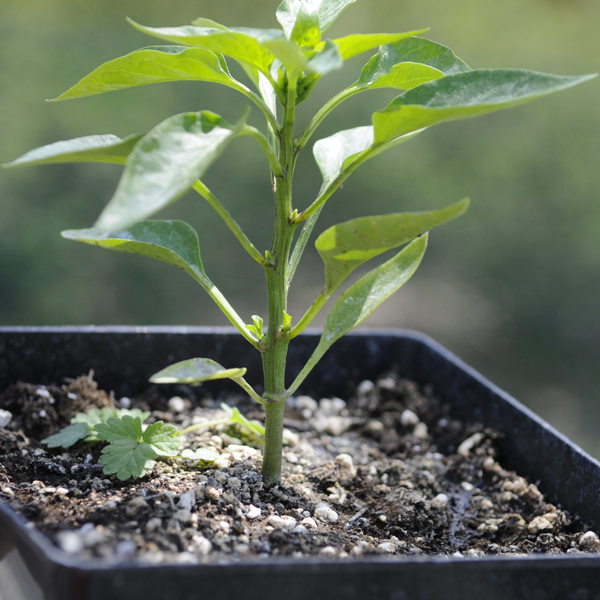
Container growing
Naturally bushy pepper plants do quite well in containers, especially if you choose a compact or patio variety. Since soil warms faster in a container than in the ground, and since you can move a pot around to keep it in the shifting sun, you may be able to grow peppers in a pot if you can't grow them in the garden. But you will have to water more frequently, since soil in containers dries out quickly.
Containers also allow you to use fresh soil every year and get around the problem of rotating crops in the garden. Peppers belong to the same family of tropical plants, the Solanaceae or nightshades, as tomatoes and potatoes. Plants of the nightshade family are susceptible to many of the same soil-borne diseases, so it's important not to plant any of these crops in the same place and the same soil year after year. Rotate them every second or third year into a spot where you previously grew cabbage, squash, or herbs.
Garden growing
This far north, peppers are not the easiest of garden crops. But there is probably no vegetable you can grow that offers such a dizzying variety of colors or flavors. Whether you are after bragging rights for growing the hottest chile or are seeking more subtle flavors from around the world, growing peppers, especially from seed, can well repay your efforts.
Beth Botts is a garden writer and speaker who lives and gardens in Oak Park, Illinois

